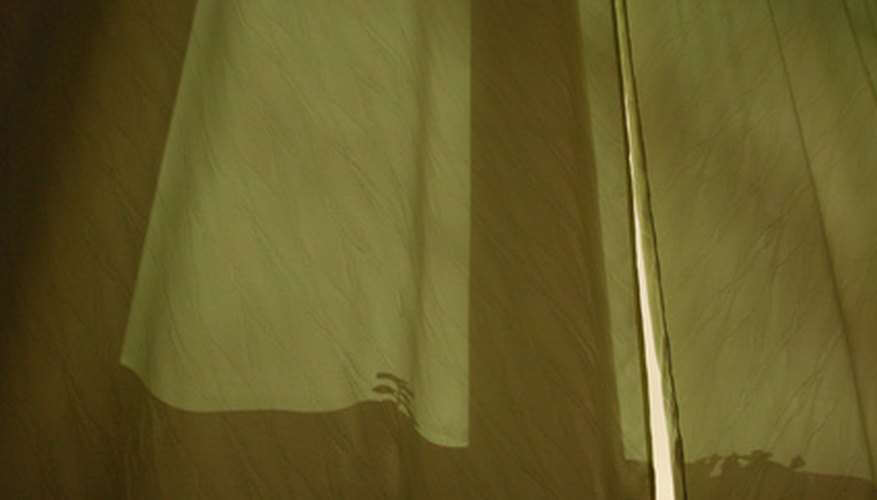In a bedroom, a guestroom or a baby's room, darkening the room adds comfort and saves money by improving insulation. Many people sleep better in a darkened room.
- In a bedroom, a guestroom or a baby's room, darkening the room adds comfort and saves money by improving insulation.
A blackout liner makes a helpful addition for a night worker's bedroom.
Reducing glare in work spaces and on televisions improves visual quality and cuts down on eyestrain. For a small amount of money and an afternoon of your time, you can add a blackout liner to a roller shade and reap the benefits of a darkened room.
Pull the window shade down to fully cover the window. Use a pen to mark the shade at least 1 inch above the top of the window. Using blackout liner on only the part of shade where it's needed will reduce bulk to help the shade roll up correctly.
Take down the roller shade. Pull down on the bottom of the shade to engage the spring to cause the shade to roll up. Raise the shade fully so it is rolled up at the top of the window. Use a stepladder, if needed. The shade has two brackets. One bracket holding the shade is open on the top. Lift the shade on the side with the open bracket. Raise the shade clear of the bracket. This releases the other side where the pin in the roller shade's centre bar rests in the closed bracket. Hand the shade to your assistant to safely dismount from the stepladder.
- Take down the roller shade.
- Raise the shade clear of the bracket.
Unroll the roller shade completely--with the backside upon a table or other flat surface.
Place the blackout liner on the back of the shade. Line up one side of the blackout liner with one edge of the roller shade.
Position an end of the liner at the mark on the shade. Extend the liner to the bottom of the shade, keeping the fabric straight.
- Unroll the roller shade completely--with the backside upon a table or other flat surface.
- Position an end of the liner at the mark on the shade.
To get an even line, take a measurement from the top of the shade to the mark. Make a second mark on the other side of the shade at the same distance from the top of the shade. Place a yardstick level with the two marks. Use tailor's chalk or straight pins to mark a straight line along the yardstick. Cut the blackout liner along the line.
Cut the other side of the liner even with the edge of the roller shade if the blackout liner is wider than the roller shade. Roll the blackout fabric down to the bottom of the shade.
Starting from the bottom of the roller shade, apply fabric glue in four stripes, 6 inches long. Put a stripe of glue ¼ inch from each edge of the shade, and a vertical stripe 1/4 inch from the bottom. Add two more stripes an even distance from each other.
Unroll the blackout liner onto the shade. Line up the bottom of the liner with the bottom of the shade. Keep the edges of the fabric even with the edges of the roller shade and press the fabric gently onto the glue. When you reach the top of the glue stripes, add another 6 inches.
- Cut the other side of the liner even with the edge of the roller shade if the blackout liner is wider than the roller shade.
- Line up the bottom of the liner with the bottom of the shade.
Repeat this process, gluing the blackout liner section by section up to the mark on the shade to attach the liner securely. Add a vertical line at the mark to hold the top and press the blackout liner to the glue. Leave the shade flat and allow the glue to dry for at least two hours.
Reinstall the shade in the window.
